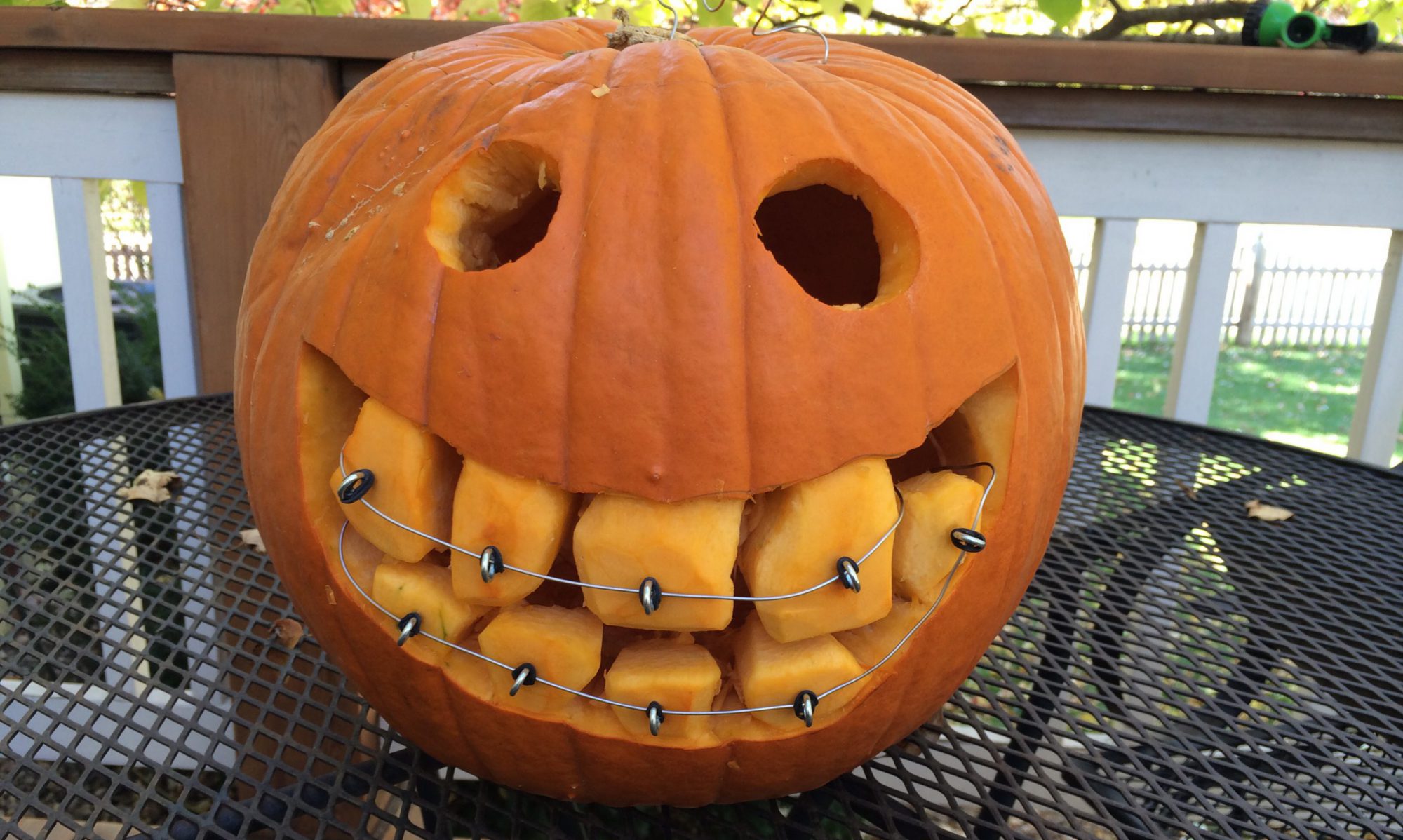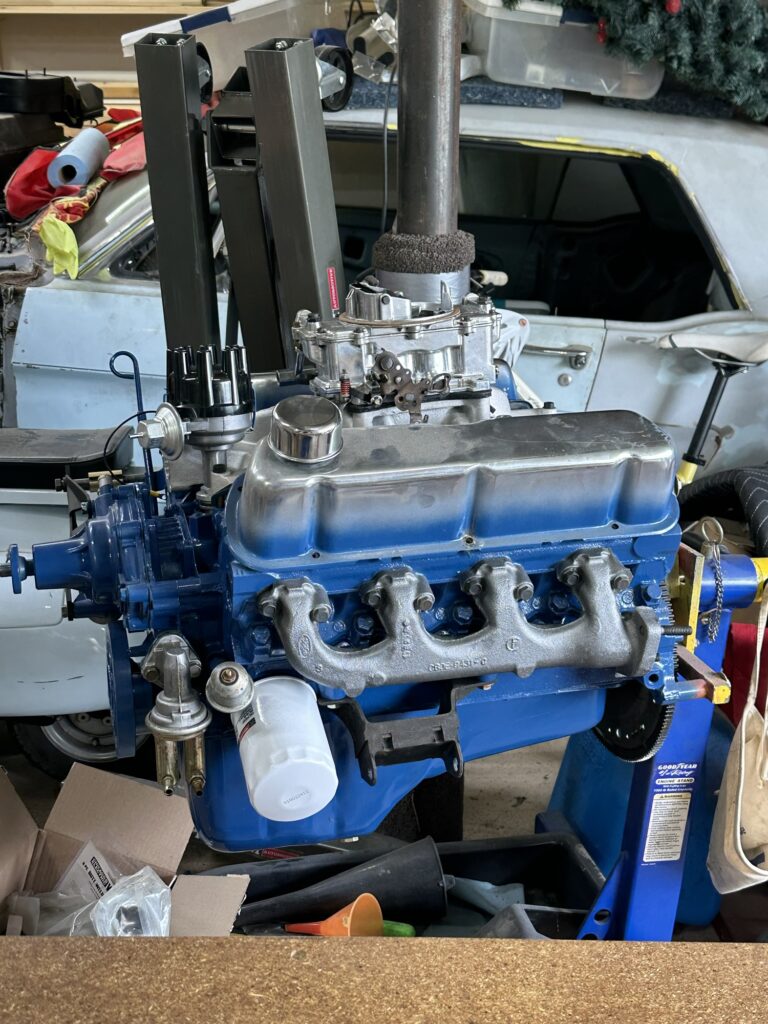The left front fender is beyond saving, at least for me. Too much rust and damage from previous “repair” work done in the worst way imaginable. Sheet metal had been tacked over the top of a big rusted-out hole with no attempt to either remove the bad metal or stop the rust, then it had been covered up with filler, The nose of the fender was also rusted out, so I’m not going to even try. The fender will contribute its sound sheet metal to my welding learning curve; I’ll chop it up and teach myself to butt, lap, and rosette weld with it. The jusry is out on the right fender, but it will likely go to the scrap yard as well.
There is evidence of old collision damage on the right front. The radiator support showed signs of having been creased and pulled back out, by way of a line of small holes apparently drilled to use a dent puller. It was rusty and bent. I decided to replace it with new. Likewise the right front fender apron had rust holes under the battery as well as some old collision damage. I decided to replace that along with the radiator support. A few days of drilling out spot welds with a spot weld cutter and I had the support loose and separated from both aprons, then got the right front apron out. Removing the front crossmember took longer, as there are a LOT of spot welds. Many are in places I can’t get to with a drill, so I used a cutting wheel on the angle grinder to cut loose everything I could. Drill, grind, cut, chisel, repeat. Long story short, it’s out. Then I found one of the strut rod supports is damaged as well, but I think I can probably straighten it out. The damage is more cosmetic than anything.
With the old sheet metal out of the way I started test fitting the new parts. The radiator support fits fine, but I’m wishing I’d bought a different part. NPD sells the support and crossmember as separate parts or already welded together. I bought the pre-welded assembly, thinking it was less welding that I’d have to do. If I’d seen how things went together, I’d have bought the pieces separately. I’ll likely end up buying a spot welder anyway, and that would have been a better way of assembling this stuff. As it is there’s a tab on the support that needs to be welded to the frame rail, but it’s covered by the crossmember so there’s no way to get in there and spot weld it. I’ll need to make some exposed seam welds for that. Not a big deal, but if I were doing it again I’d do it differently.
The fender apron seems to be about 3/16″ too far forward. I looked at my options for fixing that. I could probably just leave it as is; the misalignment is small enough that I’m pretty sure I could adjust the position of the fender to compensate. I don’t want to do that; it just seems like begging for problems later on. I don’t want to try to re-form the flange all the way down that apron. On the back end of the apron I think I can just oval out the bolt holes for the outer shock cover and move the whole part back the 3/16.
For now I’m going to get the parts lined up correctly, finish dry-fitting them, and leave them off. It will make getting the transmission and front end parts out easier. I want to get everything cleaned up as much as possible before starting to weld, just so I know everything that needs to be done.


